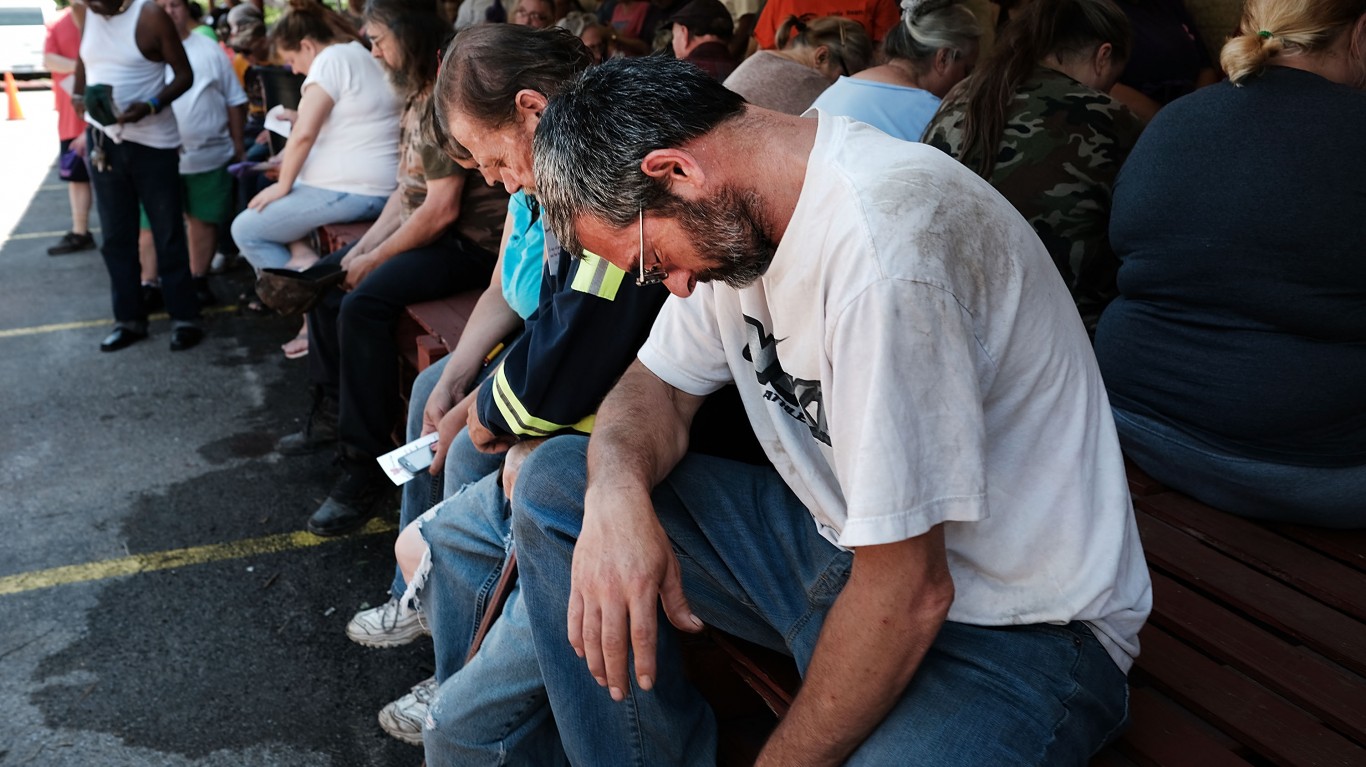
By David Callaway, Callaway Climate Insights
Regular readers of Callaway Climate Insights often ask how we can stand covering a subject so replete with bad news all the time. Indeed, as I look at the global headlines today, nine days before Christmas, there is precious little reason for seasonal hope.
Insurance giant Swiss Re’s annual report on climate disasters this week summed it up. It said more than 10,000 people died or went missing during natural disasters in the past 12 months and that insured losses ran more than $105 billion, the fourth-highest on record. It predicted things will be worse next year.
But as you’ll see in our coverage below, investors and companies aren’t rolling over. From new technologies to stop abuses in the Amazon Basin and profitable investments in natural resources stocks, to fighting environmental crime and carbon market vulnerabilities, as well as helping consumers track and reduce their own footprints, entrepreneurs are rising to the challenge.
And sometimes, sometimes, Mother Nature actually helps out. Such as in the wildfire-scarred Lake Tahoe region of the Sierra Nevada range in Northern California this week, where a massive storm dumped more than six feet of snow, delighting skiers as well as scientists battling the state’s epic drought.
These stories, and the people behind them, are what make our coverage of the environmental, social and governance (ESG) world as rewarding as it is important. We’re thankful for all of you who have joined us on this journey and look forward to seeing you again in the New Year. Happy holidays — Dave.
More insights below. . . .
ZEUS: These were 2021’s winners and losers for cleantech investors
. . . . If 2021 was a year of unrealized expectations in the environmental, social and governance (ESG) space, 2022 is shaping up to be a battle between opposing energy forces, in both markets and in politics. In his final Zeus column of the year, David Callaway looks at the winners and losers in cleantech stocks in the past 12 months, from natural resource plays to electric vehicles. And what roles inflation, supply chain issues, Covid, and geopolitics will have in shaping the ESG story for investors and companies alike in the year to come. . . .
This is the carbon market’s most vulnerable sector to offset abuse
. . . . By some estimates, about 80% of the carbon offsets offered in the Voluntary Carbon Market (VCM) are low quality, meaning they don’t accurately offset the amount of pollution a buyer is emitting when it buys them, writes Mark Hulbert. As investors work to clean up the voluntary market to make it more credible and effective, they will want to focus on offsets in the land, forest and agricultural sector, which accounts for almost half of all available offsets. Here is what investors will need to do in 2022 to fix this. . . .
These two companies are leading the fight to save Latin America’s rainforests
. . . . The Amazon Basin shifted from a carbon sink that sucks carbon from the atmosphere to net emitter of carbon in 2021, endangering the planet and proving the fallacy of waiting for governments, in this case, Brazil, to help fix global warming. Two companies, both using different forms of technology, aren’t waiting around for political help. Mike Molinski takes a look at Pachama and Royal DSM are coming at the same problem from separate angles, and what the prospects are that they can move the needle. . . .
The dark side of fighting climate change: environmental crime
. . . . Governments and banks must work together to stop an increasing threat of money laundering and dirty profits in the environmental industry if they want to combat global warming, as it’s become a $281 billion a year problem, writes Dan Byrne from Dublin, in this report in AML Intelligence. Activities such as illegal logging, cattle rustling, and forest clearing are making it profitable to destroy the environment. Financial Action Task Force President Marcus Pleyer, speaking at a conference in Europe, urged Western governments to develop new laws against money laundering as part of their campaigns to fight climate change. . . .
Thursday’s subscriber insights: Finding upside to solar and wind after a challenging year
. . . . As if troubled solar stocks haven’t had a bad enough year, now comes a new report predicting growth will be 25% less than forecast in 2022 because of inflation and supply chain issues. Add in politics with China and attacks on solar from the utilities in California and you’ve got a gloomy outlook for many of these high-fliers. But don’t overlook the market in solar components. Read more here. . . .
. . . . And as the U.S. slowly leans into its first offshore wind projects in the Northeast, it’s worth a look at other countries, such as Spain and China, where wind capacity is soaring and, at least in the Spanish case, threatening to replace coal almost entirely after only half a dozen years. Read this and weep, Sen. Joe Manchin. . . .
. . . . As billions in wealth are transferred to the children of Baby Boomers in coming years, where the young want to put that money is increasingly drawing attention. That a lot of it is heading toward environmental, social and governance funds points to a future in which how a company attempts to fight global warming will be a key investing decision for many of its shareholders. Read more here . . . .
. . . . New York City’s new law banning gas powered heaters, stoves and water boilers in new buildings is riling up an unexpected constituency — amateur chefs, who would never be caught dead working on an electric stove. With its buildings causing some 70% of the city’s carbon emissions, however, it’s likely the winner here is going to be the takeout industry. Read more here. . . .
. . . . And finally, some positive carbon reduction news by consumer offset app Joro, which reported Wednesday in a year-end update that its audience was able to collectively lower its emissions by 21% this past year. The company, run by entrepreneur Sanchali Pal said in its report, A Year of Decarbonizing with Joro that users cut emissions mostly from flying less and reducing home energy costs. They also managed to lower emissions some 6% using Joro’s offsets program, showing that a price on carbon can work, at least at this individual level. More to come on this next year. . . .
Editor’s picks: Humans causing extreme weather; plus, methane is leaking at a high rate from Permian Basin
Humans have created a new climate, and it’s not good
New research shows that human-caused climate change has made the extreme weather events we’ve recently experienced more likely, according to new research published Wednesday in the Bulletin of the American Meteorological Society. The National Oceanic and Atmospheric Administration reports climate change contributed to some of last year’s worst weather. That included failed monsoon rains that reignited the southwestern U.S. drought, a spring heat wave in western Europe, and intense Siberian wildfires. “This report reinforces the scientific consensus that human influence has created a new climate — one that is impacting extreme events today,” said Stephanie Herring, a NOAA climate scientist and editor of the Explaining Extreme Events report. “As humans continue to emit billions of tons of greenhouse gasses into the atmosphere, these extreme weather impacts are highly likely to increase.”
Methane leaking from Permian operations
Methane is leaking at a high rate from Permian Basin oil and gas operations, according to a report from Reuters. The report cites an aerial survey released this week which detected major methane plumes from 40% of 900 sites that were measured. Research done by the Environmental Defense Fund in November found that 14% of those plumes were the result of malfunctioning flares. The report also notes the survey follows a proposal by the U.S. Environmental Protection Agency that would regulate methane emissions from existing oil and gas facilities.
Words to live by . . . .
“Greed over need harms us all. Corruption spreads through societies and erodes people’s trust in leaders & institutions. As countries invest in recovery from the pandemic, we must guard against the diversion of vital resources by criminal opportunists.” — António Guterres, Secretary General of the UN.
Callaway Climate Insights Newsletter
The Average American Has No Idea How Much Money You Can Make Today (Sponsor)
The last few years made people forget how much banks and CD’s can pay. Meanwhile, interest rates have spiked and many can afford to pay you much more, but most are keeping yields low and hoping you won’t notice.
But there is good news. To win qualified customers, some accounts are paying almost 10x the national average! That’s an incredible way to keep your money safe and earn more at the same time. Our top pick for high yield savings accounts includes other benefits as well. You can earn up to 3.80% with a Checking & Savings Account today Sign up and get up to $300 with direct deposit. No account fees. FDIC Insured.
Click here to see how much more you could be earning on your savings today. It takes just a few minutes to open an account to make your money work for you.
Our top pick for high yield savings accounts includes other benefits as well. You can earn up to 4.00% with a Checking & Savings Account from Sofi. Sign up and get up to $300 with direct deposit. No account fees. FDIC Insured.
Thank you for reading! Have some feedback for us?
Contact the 24/7 Wall St. editorial team.



